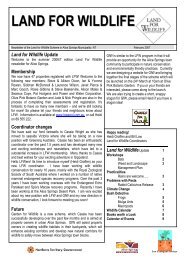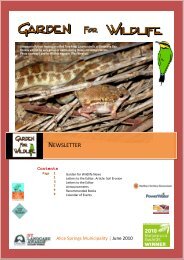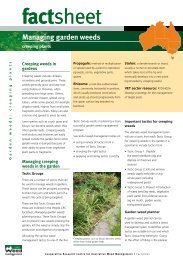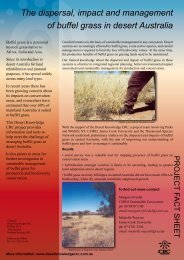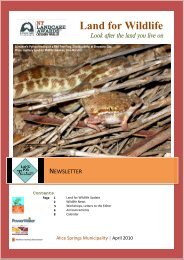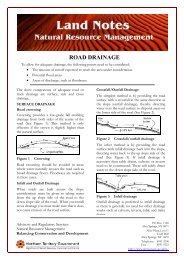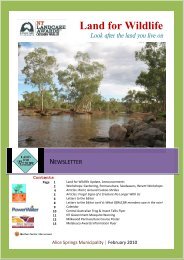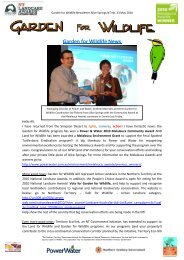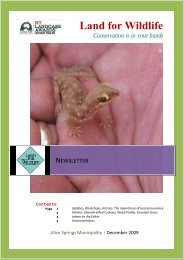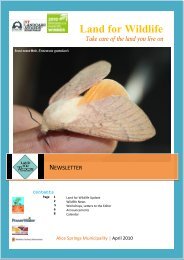Identifying Nests, Tracks, Scats, Burrows, & Other Signs
Identifying Nests, Tracks, Scats, Burrows, & Other Signs
Identifying Nests, Tracks, Scats, Burrows, & Other Signs
Create successful ePaper yourself
Turn your PDF publications into a flip-book with our unique Google optimized e-Paper software.
Rabbit: Rabbit scats are small and round. They contain fine plant particles. Rabbits often deposit<br />
their scats on elevated patches of ground which act as territorial markers. Many scats of many<br />
individuals may accumulate in these communal latrines (as pictured above). The above image shows<br />
scats of various ages – fresh scats are darker in colour.<br />
Dog: To left of the above image, dog scats are also present. Dog and Dingo scats are cylindrical and<br />
larger than a Cat scat and cats bury their droppings. It is difficult to tell the difference between a wild<br />
Dog and a Dingo scat in the field. Fragments of fur, bone, feathers, etc., may be found in the scat,<br />
and occasionally plant matter will be present too. Colour and size may vary. Dogs and Dingos often<br />
deposit scats on elevated places (rocks, grass tussocks), and may use the site more than once. <strong>Scats</strong><br />
are commonly deposited near dead animals (road kill, cattle carcasses).<br />
Echidna: Echidna scats are long cylinders approx. 2cm in diameter. When broken open you will see<br />
the scat contains shiny insect particles, mainly ants and termites but also beetles or larvae, and lots<br />
of soil. The colour of the scat varies, depending on the colour of the soil. <strong>Scats</strong> can be found<br />
anywhere, but are often found near to where the Echidna has been feeding, such as rock piles,<br />
termite mounds, and meat-ant mounds.<br />
<strong>Other</strong> signs:<br />
Photo: Hayley Michener<br />
Many other signs can reveal the presence and activity of animals. For example, finding bones, fur,<br />
burrows, scrapes or diggings, and scratch posts may give you a clue as to what is around.<br />
Rabbit: burrow (left). Often as deep as half a metre below the<br />
surface, burrows can be singular (like this one pictured) but are<br />
often a complex system with numerous entrances forming a warren.<br />
Soil dug out of the burrows may form a mound outside the entrance.<br />
Some burrows are re-dug from inside and therefore have no soil<br />
mounds at the surface.





